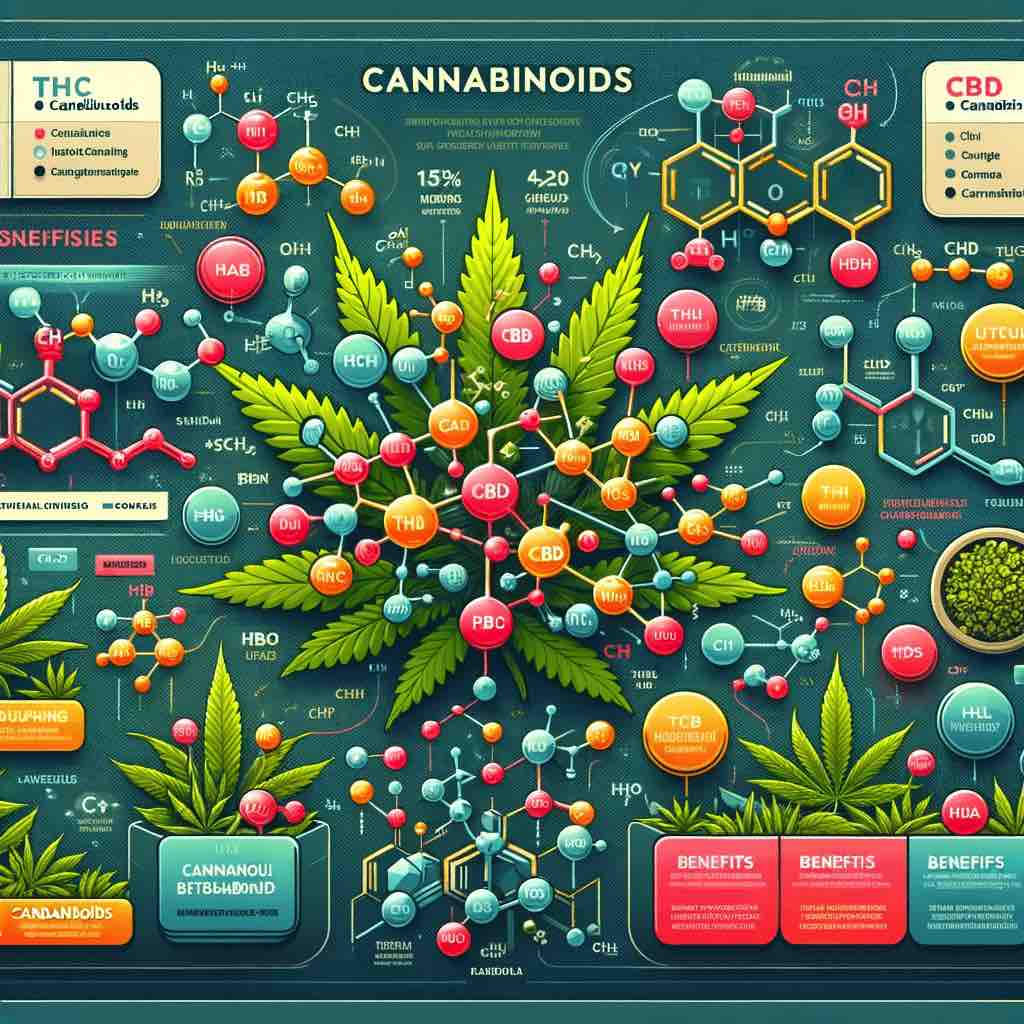What are Cannabinoids?
Cannabinoids are a diverse group of chemical compounds that are naturally produced by cannabis plants, as well as the human body. These compounds have gained significant attention in recent years due to their potential therapeutic benefits and their role in the endocannabinoid system (ECS). In this comprehensive guide, we will explore the different types of cannabinoids, their interactions with the body, and their potential effects.
Types of Cannabinoids
Phytocannabinoids
Phytocannabinoids, also known as plant cannabinoids, are naturally occurring compounds found in cannabis plants. Over 150 different phytocannabinoids have been identified, with the most well-known ones being THC (tetrahydrocannabinol) and CBD (cannabidiol). These phytocannabinoids interact with the human body’s ECS and non-cannabinoid receptors, influencing various physiological processes.
Endocannabinoids
Endocannabinoids, which stand for endogenous cannabinoids, are internally produced cannabinoids that are essential to our body’s ECS. As part of the ECS, endocannabinoids help regulate bodily functions such as appetite, pain, mood, and memory. Anandamide and 2-arachidonoylglycerol (2-AG) are two of the most studied endocannabinoids.
Synthetic Cannabinoids
Synthetic cannabinoids are artificially manufactured chemicals designed to mimic the effects of natural cannabinoids found in cannabis. These synthetic versions can be much more potent and unpredictable than phytocannabinoids. They bind to the same cannabinoid receptors in the brain as THC, but their chemical structure is different from the naturally occurring cannabinoids in cannabis. Synthetic cannabinoids are often found in products marketed as “synthetic marijuana” or “legal highs,” but they can have dangerous side effects.
Acidic Cannabinoids
Acidic cannabinoids are the original forms, or precursors, of cannabinoids found in fresh, unprocessed cannabis buds. These compounds have a carboxylic acid group attached to them, which makes them different in structure and function from their more commonly known “activated” counterparts. Well-known acidic cannabinoids include THCA, CBDA, and CBGA. These acidic cannabinoids offer potential benefits such as anti-inflammation, neuroprotection, anti-nausea, pain relief, and non-intoxication.
The Effects of Cannabinoids on the Body
Cannabinoids interact with the body’s ECS, a complex cell-signaling system that plays a crucial role in maintaining homeostasis. The ECS consists of three core components: endocannabinoids, receptors, and enzymes. When cannabinoids enter the body, they interact with the cannabinoid receptors, influencing the ECS and affecting various bodily functions.
The two main cannabinoid receptors are CB1 receptors, mostly found in the central nervous system, and CB2 receptors, mostly found in the peripheral nervous system and immune cells. THC binds with CB1 receptors in the brain and can produce intoxicating effects, while CBD does not bind as directly with CB1 or CB2 receptors and is non-intoxicating, instead influencing the body in more subtle ways.
The exact effects of cannabinoids depend on the type of cannabinoid consumed and the location of the receptors they interact with. THC is known for its intoxicating properties and can induce euphoria, pain relief, increased appetite, and relaxation. CBD, on the other hand, has anti-inflammatory, anti-anxiety, and potential neuroprotective properties, among other potential benefits.
Major Cannabinoids
Cannabis plants contain several major cannabinoids, which are present in larger quantities. Each major cannabinoid has unique properties and potential effects:
- Tetrahydrocannabinol (THC): THC is the most well-known cannabinoid due to its intoxicating properties or the “high” it produces. It is consumed for various medical purposes, including pain relief, appetite stimulation, and nausea reduction.
- Cannabidiol (CBD): CBD is a non-intoxicating compound known for its role in alleviating conditions like anxiety, epilepsy, inflammation, and pain.
- Cannabinol (CBN): CBN is a mildly intoxicating cannabinoid that is often found in aged cannabis. It is being researched for its potential sedative properties and as a possible treatment for insomnia and pain relief.
- Cannabigerol (CBG): CBG is a non-intoxicating cannabinoid similar to CBD. It is being studied for potential medical applications, including anti-inflammatory, neuroprotectant, and antibacterial properties.
Minor Cannabinoids
In addition to the major cannabinoids, cannabis plants also contain minor cannabinoids, which are present in trace amounts. These minor cannabinoids are gaining attention for their potential therapeutic benefits:
- Tetrahydrocannabivarin (THCV): THCV is similar to THC but has slightly different effects and is present in much lower concentrations. It is being researched for potential roles in weight loss and diabetes management.
- Cannabichromene (CBC): CBC is a non-intoxicating compound similar to CBD. It has shown potential in contributing to the analgesic, anti-inflammatory, and anti-cancer properties of cannabis.
- Cannabidivarin (CBDV): CBDV is non-intoxicating and is being explored for its potential in treating epilepsy, autism, and other neurological conditions.
- Delta-8-THC: Delta-8-THC has intoxicating effects, although not as potent as delta-9-THC. It is being investigated for potential anti-nausea and appetite-stimulating properties.
- Cannabicyclol (CBL): CBL is a rare, non-intoxicating cannabinoid. Its non-intoxicating precursor, cannabicyclolic acid (CBLA), has been studied for its anti-inflammatory properties.
Conclusion
Cannabinoids are a diverse group of chemical compounds that interact with the body’s endocannabinoid system. They can be found in cannabis plants, the human body, and can even be synthesized. Different cannabinoids have different effects on the body, ranging from intoxication and pain relief to anti-inflammatory and neuroprotective properties. Major cannabinoids like THC and CBD are well-known, while minor cannabinoids are gaining attention for their potential therapeutic benefits. As research continues, our understanding of cannabinoids and their potential applications in healthcare and wellness will only grow.

